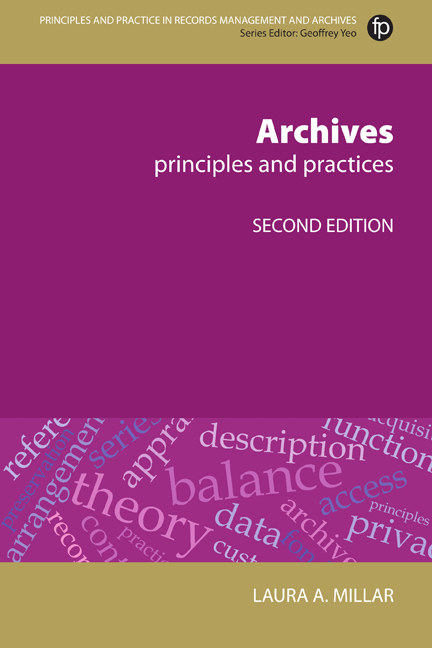Foreword to the first edition
Published online by Cambridge University Press: 08 June 2018
Summary
Archives and records are important resources for individuals, organizations and the wider community. They provide evidence of, and information about, the actions of individuals, organizations and communities and the environments in which those actions occurred. They extend and corroborate human and corporate memory and play a critical role in maintaining awareness of how the present is shaped by the past. As Laura Millar notes in this book, they are among the tools we can use to help us understand where we came from and where we are going.
Record keeping has a long history. The Gilgamesh epic, originating almost fifty centuries ago, tells how a woman made marks on a wall to record the number of days that Gilgamesh slept. Notched sticks or bones were often used in preliterate societies as a means of recording work done, livestock counted or hunting expeditions successfully concluded. The invention of writing opened the way to more sophisticated methods of recording actions and events, and also to the possibility of communicating information and sending orders and requests by methods other than word of mouth. Letter-writing has been used for correspondence for over four thousand years, and at a very early stage in its development our ancestors discovered that a letter could serve the dual purpose of communicating a message across space and preserving it across time. In early civilizations in Asia and the eastern Mediterranean, the ability to refer back to what had been said and done in the past without having to rely solely on mental recollection supported the development of new methods of government and commerce and systems to monitor the accountability of individuals or workgroups charged by the ruler with particular tasks. Later came the discovery that writing could be used not merely to record but also to create a range of abstract phenomena such as permissions, obligations, commitments and agreements, and to provide evidence of their creation in the event of disputes.
Written records serve these purposes merely by virtue of their persistence – their ability to endure beyond the cessation of the actions they represent – but for at least four millennia people have seen the benefit of setting them aside and organizing their storage in dedicated repositories. As records proliferated, many such repositories were established in the ancient world.
- Type
- Chapter
- Information
- ArchivesPrinciples and Practices, pp. xi - xivPublisher: FacetPrint publication year: 2017



